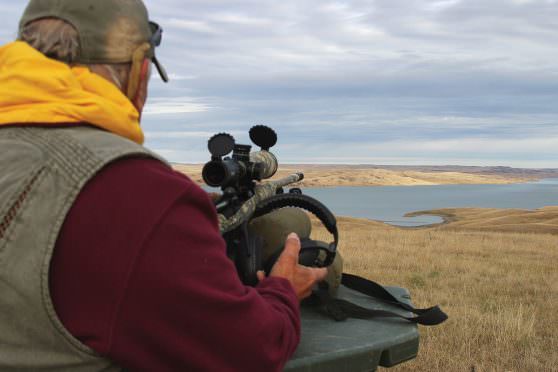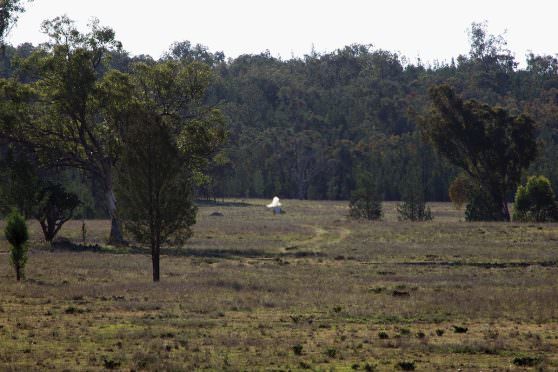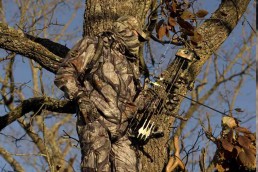Shooting the Mile, part two
SHARE THIS POST
Going downrange
Right from the start I will, by way of a ballistic table illustrated here, address some of the massive issues involved when shooting at ultra-long-range targets. Shooting the 338 Lapua—even being one of the very best in stretching your shot into the next zip code—still can give you fits after a bullet crosses the 1,000-yard line. The illustrated ballistic table is based on my at-home altitude of 3,000 feet above sea level. Temp is average for early fall, and all three measurement systems have been put into play re inches, and Milrads (3 1/2 inches per mil at 100 yards).
At first, the 338 Lap is looking very effective inside 1,000 yards. The Milrad elevation adjustments (hold over) are minimal and easy to acquire with the military-based Horus optic reticle. Horus was designed to allow the long-range shooter the ability to gain larger amounts of elevated sighting with a single click of the scopes turret system and to allow the use of basic holdover through the reticle when sighting. With the MOA system, you gain 1 inch at 100 yards in elevation with a single full click.

The Milrad system increases that elevation figure to 3 1/2 inches per click. The big difference is when trying to produce the correct elevation at a full mile or more downrange. The simple fact is most scopes run out of elevation long before even 1,000 yards, and some “deer rifle” scopes die a fast death at about 400 yards.
When bullets are pushed farther downrange, velocity starts to fall off and the degree of required elevation becomes a major factor. Now, direct target fire is no longer part of the program and basic artillery ballistics are starting to move into the equation. Note the angle of elevation and drop regarding the 250-gain 338 Lap bullet at 1,400 yards (651 inches of drop). Now, push to almost the full mile being 1,760 yards and the bullet drop is coming like raindrops out of the sky at a 1, 155.5-inch drop or 32 yards incoming overhead. Factor in wind at muzzle and aloft (elevation max) temperature, baseline measured elevation and shooter error, and the shot becomes almost impossible. To clarify, by using pure math, the shot becomes totally impossible, yet it is being done by some shooters at the time of this review—an indication as to just how far the new game of long-range shooting has come even though it is an “infant” main-line shooting sport.
Learning your rifle
I got a lesson handed to me about the time I was starting to bring this material together. I had made two trips out on the range: a local run to our 1,000-yard facility (private) and a second trip to the South Dakota Badlands. Both events returned more problems than solutions, and I must say I didn’t shoot well at all. On the first shoot I lost any element of splash location at 1,500 yards due to soft ground in the area of my target. Shutting down early, I then turned to the dry, dusty Badlands a few days later so as to allow me to see bullet splash, and as such, I did send several rounds out to 1,350 yards and located bullet impact by the dust clouds they generated. By the fourth round downrange, I was off to the left and low at least 10 yards and realized that I had—due to recoil—broken a mount screw on the Weaver-style scope rail of the Savage Model 111.
Getting the rifle home, I then repaired the screw issue and tightened down everything regarding the sight group once again. Now it was time to re zero, and that’s when I got a real lesson in something I thought I had firmly in hand all along. Pulling in my range to 300 yards on a basic coyote target, I then sent the first round after a dead-on 100-yard zero totally off the paper and to the left. After I pulled up my lower jaw that was now hanging on my first jacket button, I sent a second round only to find that I was now shooting a good centerline, but my bullet was hitting about a foot low. When reality set in I realized that I was experiencing a glitch in the first focal plane system, as applied to the big sniper scope. When changing the scope’s power settings the bullet impact is moved up or down. What I was doing was trying to adjust elevation and windage, but in the process I was moving my magnification level as well. It won’t work, or at least the system requires the shooter to log the amount of drop and drift for each different power setting. However, within an hour, and using a single magnification setting at a 10 power, I was pushing accurate rounds out to 600 yards on steel and my 300-yard coyote target groups had become tighter and quite workable. Also, the 10X setting allowed me to see the 12-Milrad hash mark at the 6 o’clock of my reticle. And by adding 14 more mils from my turret settings (halfing), I was then good to 1 mile regarding corrected elevation. While I had consumed some very expensive ammunition in the process, but I now had a far better overall command of my optics and felt far more capable of taking on the 1-mile shot once again. I should mention that I use this very same scope on my Armalite A-1 30 in 300 Win Mag, but in this case any corrections are less affected by magnification levels.
Third attempt to go long
Just about the time I was to bring together my next attempt at shooting 1 mile downrange accurately, another commercial outfit—one that will remain unnamed—was trying for a record 2,500-yard shot (by way of the 338 Lapua). Selecting a high, dry earth and rock cliff, they were trying for a visual of the bullet splash against the mountain at that extreme range. However, even with the best optics used in spotting, the shot failed—they were never able to locate a bullet impact point. Knowing that information would have allowed the shooter to correct for windage and elevation.
Knowing the problems some of my acquaintances were having at the long end of a mile or more, I then decided that with a ditch-chicken hunting trip to the Missouri River in eastern South Dakota, I’d make use of the wide river bottoms. And from a local ranch selected, a ranged target from a high bluff overlooking the river I’d proceed to try and hit the thing. With the brand new Leica 2000 rangefinder in hand, I locked onto a rock in the river about 10 yards offshore that was the size of a deer laying down. The exact range: 1,768 yards or just beyond 1 mile—letter-perfect. As I set up my bench and rifle, my mate Tom got behind my pair of massive Russian-built (ATN) tank-fighting binocs.
With the air temperature 80 and a crosswind of 5 mph, I knew I had enough steam in terms of bullet velocity. But this shot would be a drifting slider, based on just how easy a bullet is in flight over 3 seconds and drops a full 150-plus feet out of the sky to change positions in the air prior to reaching a target. Even the earth’s rotation and the spindrift (rotation right from rifling turns) of the bullet needed to be accounted for. Federal Cartridges had produced some good solid firing solutions for me that I had copied and brought along, but there would still be those very fine points for trigger control, sight picture and follow-through that would become paramount to making this shot.
Using my Milrad reticle, I held over the very small piece of stone at a full 12 mils then turned up my turret settings another 14 mils. I pushed the barrel into the wind an additional 3 mils to the left.
Are you enjoying this post?
You can be among the first to get the latest info on where to go, what to use and how to use it!
“Is shooter ready?” Tom called out.
“Send it!” I exclaimed, indicating that I was on target.
After the command, and with about 7 ounces off the Model 111’s trigger, the rifle bucked and settled back down on the bags.
Time stopped seemingly forever before Tom picked up the bullet’s splash through the glasses.
“Low 10 yards! Vertical impact 3 yards right!”
The spotter’s return data told me that there was more wind out on the river than what we were facing out here on the higher bluff flats—additional elevation needed to be addressed.

Resetting for a second round downrange, I now pushed the barrel another 2 full mils into the wind and increased my Milrad elevation by .7 mils. Now I could see water ripples building into a circle about 200 yards wide by the same measurement in length. Wind swirl went through my mind and now I was wishing I had called the Aviation Weather Center for wind-aloft landing instructions (kidding). My bullet was starting in almost dead air, climbing into a wide arc, and then descending into a mix of air coming from several directions—that’s nuts. I broke the Savage 111’s trigger, and at the shot Tom indicated dead on elevation. But the bullet had still drifted right about 3 yards. With the next correcting pushing another .5 mils into the wind drift index, the shot went downrange and splashed water on the rock with a bullet placed inside a 12-inch area to the right. A sleeping elk would had lost his head or neck to the shot, or, bad guys in the sand box setting up a trench mortar would have had someone’s insides spread out all over the place. However, in my case being the fun-loving fellow that I am, it was great to see that very close impact while addressing a target about 11 inches high by 20-plus inches long at 1 mile downrange.
In my mind I had succeeded, in terms of making the 1-mile shot. By that evening, after walking cornfields all day and without question being more than spent, I sent five additional rounds downriver. According to my spotter, I lined one of the rounds dead center over the rock, sending the bullet splashing 10 yards directly behind the target. Tom indicated that if a man had been standing right there he would have taken the bullet high in his body.
With that, it was time to fold up my tent. Deep cold was descending on the bluff and river bottoms so much so that a drastic air temperature change was occurring, generating airflow straight down or at a very slight right angle to the now slowly moving long grass. At the current price of ammo—even in the Federal American Eagles affordable package—I just didn’t want to recalculate that wind-driven shot at all.
Conclusion
Working with rifles at very long range has become a passion for me; it’s a game that can be played while complementing your standard shooting events in hunting or in a scatterguns clays “bird” games. In terms of making the shot, the rewards are about the same as hitting a running mule deer at 250 yards in the neck. Ask yourself how many shooters do you know who have made even the 1000-yard shot, much less one at a full mile? Currently, there are some long-range shooters working on 2-mile targets. As for that deal, I would need to study ballistics further and obtain some rifles and scopes in a league totally separate from all others. As for actually doing it, well, never say never around a guy with a darn accurate long-range rifle. I tend to think that the old Missouri River would add another mile to my target with ease.
MWO
SHARE THIS POST
Did you enjoy this post?
You can be among the first to get the latest info on where to go, what to use and how to use it!
MWO
We believe being outdoors is good. With more than 1,000 articles each year, MidWest Outdoors magazine is all about sharing outdoor experiences with you—where to go, what to use and how to use it… whether you’re close to home or on that trip of a lifetime.



